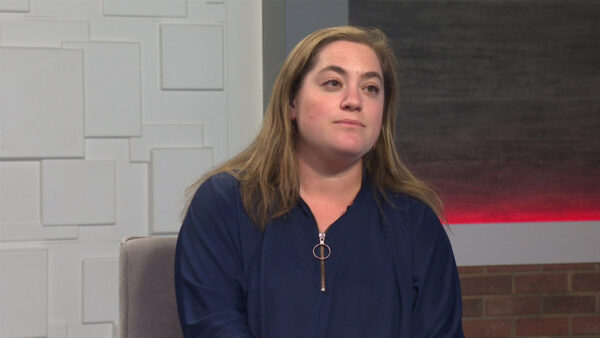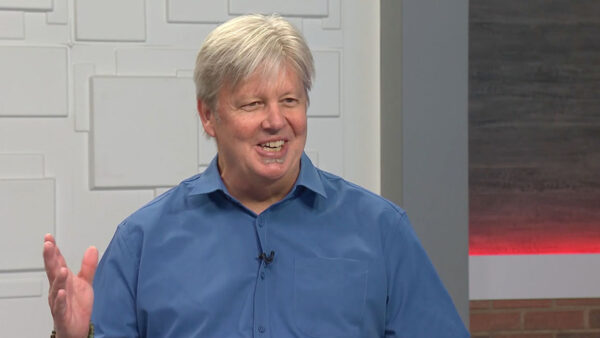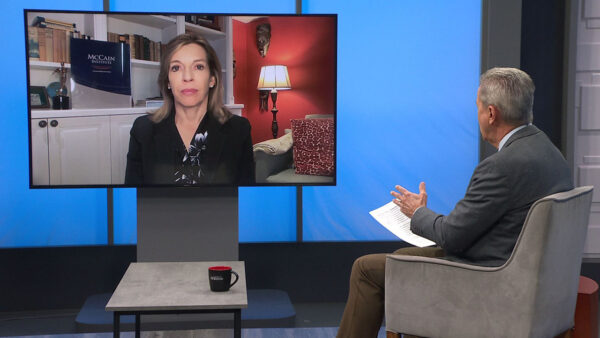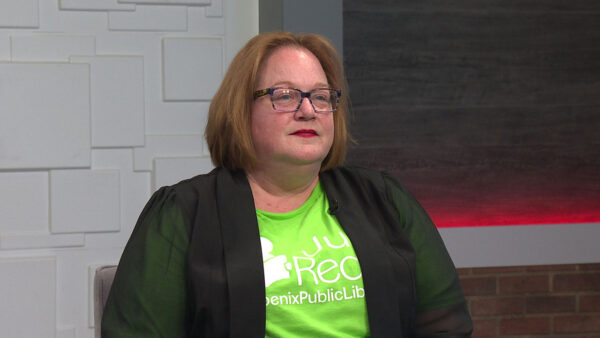Buildings, roads, parking lots and other man-made structures have caused the average nighttime temperatures in the Phoenix Area to increase dramatically. Mick Dalrymple, Arizona State University’s Energize Phoenix Project Manager, has a plan to reduce nighttime temperatures by one degree. Dalrymple will discuss his plans.
Ted Simons: Buildings, roads, parking lots and other man-made structures have caused nighttime temperatures in the Valley to increase dramatically. Mick Dalrymple is ASU's Energize Phoenix project manager and he has a plan to reduce those nighttime temperatures. Welcome to "Arizona Horizon."
Mick Dalrymple: Thank you very much.
Ted Simons: The plan is called One Degree.
Mick Dalrymple: Yes. One Degree, just to keep it simple. It's a very easy idea. Very complicated to undertake, but actually very easy to conceptualize, that over a period of five years through a series of actions we would reduce the overnight low temperature in downtown Phoenix by one degree.
Ted Simons: What would those series of actions entail?
Mick Dalrymple: They would involve a lot of community action, changes in city policy, changes in city operations. But basically the three things that you want to do to try to reduce urban heat island is first keep the sun off of hot surfaces. So put up shade structures. They can be solar shade structures, trees, canopies, anything over buildings or streets or parking areas. The second thing is if you can't shade it, if you can't keep the sun off of it, try to have your surface be more reflective so it sends that heat back instead of absorbing it. If you can't do that, then you want to try to use materials that hold less heat. They shed heat faster. So we call it emissivity. Use permeable concrete or rubberized asphalt instead of asphalt because it has more surface area, it's rubberized, so it doesn't absorb as much heat or hold on to it. Things like concrete tiles on roofs. They don't make any sense. It's the roof that keeps on giving. Three, four, five hours after sunset it's still heating up your house.
Ted Simons: When we talk about the urban heat island, without getting into too much detail, that is the problem. During the day with the sun beating down it absorbs the heat. Then when the sun goes away -- you go outside some nights and it seems like it was cooler when the sun was setting than it is two hours later.
Mick Dalrymple: Yeah. It's amazing. Going into a parking lot after sunset you just feel this heat just coming up towards you. We have a tremendous am of parking lots and streets in Phoenix. We're a low-density place. You could do amazing things just by in the regular chip-seal process where a street is recoated if the city were to just increase the reflectivity of that coating by 10%, then over a period of five years you could essentially decrease the amount of heat absorbed tremendously in the city.
Ted Simons: How do you go from a plan to achievement?
Mick Dalrymple: It's really about partnerships, and Energize Phoenix has taught us a lot about partnerships. That was a partnership between APS, the city of Phoenix and ASU. You need those partnerships. So basically the city needs to take the lead. City leaders, city managers need to come together from multiple departments there are streets involved, parks and recreation, public works. Water is involved, the energy manager is involved. Then you need to get the community groups on board as well. I think that's the beauty of one degree is it's a really easy concept to sell. Everyone can get behind that. The benefits are huge. There's economic benefits, tourism benefits. You lengthen the convention season here. So we have actually calculated within the Energize Phoenix corridor if you were do to this, you would decrease electric bills for corridor businesses and residents by $2.1 million a year.
Ted Simons: And health benefits as well, that has to be factored in as well.
Mick Dalrymple: Yes. ASU has actually done a tremendous amount of research on urban heat island. Some of it is related to the inequity of the heat island impacts. The elderly, the sick, the homeless. Poor people. They have less tools to deal with urban heat island so they suffer more and there's more hospital visits.
Ted Simons: I was interested reading about this in Sacramento 50% of parking lots in Sacramento must be shaded by trees. New York and Chicago have programs, variety levels of Green. The fact is some municipalities are tackling this sort of thing.
Mick Dalrymple: They are. What's amazing is Phoenix is for a variety of reasons historically the most studied city regarding urban heat island. We know more here or from the city of Phoenix than a lot of these places do. They are taking some proactive approaches. Common sense. People with businesses tend to put on cool roofs. We already do that. It wouldn't be much a stretch to say, if you redo your roof you have to do it as a cool roof. There are a lot of things we can do. This is the laboratory right here. If we can change things here, that would be fantastic.
Ted Simons: With that in mind, last question, the psychological impact of just tackling the urban heat island is a factor.
Mick Dalrymple: Yes. I'm actually going to be starting to work for the Rob and Melanie Walton Sustainability Solutions Institute and the Global Institute of Sustainability. That's some of the things we're trying to do is take that science and apply it to solve real problems. We're going to be looking at things like this.
Ted Simons: Fascinating. If you can get even one degree that's somewhere. That's something.
Mick Dalrymple: It's a psychological boost that we could do something about climate change as well.
Ted Simons: Good to have you here.
Mick Dalrymple: Thank you.
Mick Dalrymple:Project Manager, Arizona State University's Energize Phoenix;























